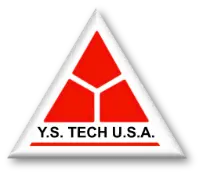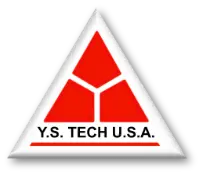You’re not imagining it: thermal management is the future of alternative energy
How often do you think about the mechanisms keeping EV battery packs within their optimal state-of-charge temperature window or preventing PV modules from exceeding their maximum power point efficiency range? Probably less than you should. The reality is, every high-performing wind turbine, battery energy storage system (BESS), or photovoltaic string inverter is only as reliable as the thermal management strategy underpinning it.
The global drive toward alternative energy-from distributed rooftop arrays to utility-scale wind farms-has elevated thermal engineering from a peripheral design task to a core system requirement. Neglect junction temperature stability, and you accelerate capacity fade in lithium-ion cells, drive IGBT thermal runaway in inverters, or induce premature bearing wear in direct-drive wind turbines. In short, thermal mismanagement converts CAPEX into unplanned OPEX far sooner than modeled.
Table of contents
- Why thermal management is mission-critical in alternative energy systems
- Breakthrough thermal control architectures redefining cooling and heating
- Integration of thermal management into sustainable device lifecycles
- Advanced material science elevating heat transfer coefficients
- Industry adoption examples: Henkel and beyond
- Engineering takeaways for design, testing, and field deployment
1. Why thermal management is mission-critical in alternative energy systems
Whether you’re running finite element thermal simulations in ANSYS or validating heat dissipation curves in a climatic chamber, you know temperature is a primary failure mode driver. Empirical data confirms: for every 10 °C elevation in cell temperature, lithium-ion battery cycle life can be reduced by 50%. Elevated case temperatures in GaN and SiC semiconductors drastically reduce mean time between failures (MTBF).
Thermal management in this context refers to controlling conduction, convection, and radiation pathways to maintain operational parameters, ensure safety margins, and extend service intervals. Failure to design for these parameters compromises not only efficiency but compliance with IEC 62933, IEC 61215, and UL 9540A standards.
2. Breakthrough thermal control architectures redefining cooling and heating
Legacy forced-air convection is being displaced by two-phase cooling architectures-vapor chambers, loop heat pipes, and dielectric immersion fluids-delivering thermal resistances below 0.02 °C/W. Computational fluid dynamics (CFD) optimization now enables 30%+ reductions in parasitic cooling loads compared to conventional fan-driven systems (Energy Sustainability Directory).
Vapor chambers, in particular, provide high in-plane thermal conductivity (>10,000 W/m·K equivalent) enabling uniform heat flux dissipation across battery module arrays. This mitigates localized hotspots during high C-rate charging or peak irradiance PV conditions.
3. Integration of thermal management into sustainable device lifecycles
In EV propulsion systems, inadequate temperature regulation can trigger electrolyte decomposition, dendrite growth, and accelerated impedance rise-shortening battery useful life. The National Renewable Energy Laboratory (NREL) has quantified that optimal thermal conditioning can double battery pack service life.
Similarly, in high-power-density PV inverters, heat accumulation elevates MOSFET/IGBT junction temperatures beyond TJmax, derating output and risking thermal cycling fatigue. In solid-state lighting (SSL), elevated junction temperatures (Tj) above 85 °C can induce lumen depreciation (L70) far earlier than design targets.
4. Advanced material science elevating heat transfer coefficients
Phase-change materials (PCMs) with latent heat capacities exceeding 200 kJ/kg are being deployed for peak load shaving in thermal profiles. Graphene-enhanced thermal interface materials (TIMs) now achieve thermal conductivities >12 W/m·K while maintaining low bond-line thicknesses for reduced thermal impedance.
Emerging bio-based PCMs and high-capacity composites are enabling thermal inertia in PV arrays, reducing thermal gradients by up to 15% and mitigating efficiency losses during NOCT (Nominal Operating Cell Temperature) conditions. In parallel, renewable-driven thermal loops-solar absorption chillers, geothermal loops-are replacing refrigerant-based DX systems in off-grid deployments.
5. Industry adoption examples: Henkel and beyond
Henkel Adhesive Technologies has developed TIMs and thermally conductive structural adhesives optimized for inverter assemblies, achieving up to a 20% increase in system MTBF by reducing ΔT across heat-generating components. Their formulations exhibit stable thermal conductivity over >10,000 thermal cycles, critical for applications exposed to diurnal temperature swings.
Other OEMs are integrating high-k ceramic substrates and aluminum nitride (AlN) baseplates to enhance spreading resistance in power electronics, particularly in offshore wind converter modules and grid-tied energy storage systems.
6. Engineering takeaways for design, testing, and field deployment
- Thermal modeling is non-negotiable: Integrate CFD and FEA in early-stage design to eliminate post-prototype thermal bottlenecks.
- Material selection impacts lifecycle cost: High-performance TIMs, PCMs, and vapor chambers pay for themselves in reduced OPEX.
- Design for environmental extremes: Factor in temperature swings, humidity ingress, and dust loading per IEC 60068 test protocols.
- Verify with accelerated life testing: HALT/HASS protocols expose latent thermal weaknesses before field failures occur.
- Cross-discipline integration: Coordinate mechanical, electrical, and materials engineering teams to ensure thermal considerations align with electrical load profiles and structural constraints.
Key Takeaways
- Thermal stability is directly correlated with MTBF in all alternative energy subsystems.
- Two-phase and advanced material solutions deliver order-of-magnitude improvements over legacy convection-only systems.
- A ΔT reduction of even 5 °C can yield double-digit percentage gains in efficiency and lifespan.
- Industry leaders are quantifying ROI from thermal innovation through reduced field failures and warranty claims.
FAQ: Thermal Management in Alternative Energy Systems
Q: Which thermal control strategies are most effective for BESS and PV inverters?
A: Vapor chambers, loop heat pipes, and graphene-based TIMs offer the best combination of thermal conductivity, weight reduction, and design flexibility.
Q: How does thermal cycling impact alternative energy hardware?
A: Repeated expansion/contraction from thermal cycles accelerates solder joint fatigue, delamination in laminated busbars, and TIM pump-out, all of which reduce operational lifespan.
Q: What’s the ROI case for advanced thermal solutions?
A: Reduced derating, extended service intervals, and lower failure rates often offset upfront costs within 18–36 months in high-duty-cycle deployments.
A: Yes-solar absorption chillers and geothermal loops are increasingly integrated into microgrids and hybrid renewable plants to maintain electronics below critical Tj thresholds without additional grid load.



